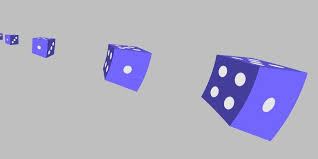I have always been clear that ANY number to power 0 is 1.
exp(0) is 1.
0^0 is 1.
Now you might admit to negative solutions with roots. So -1 is probably OK too.
Might need some care with a discontinuous function. Always be careful with them in algebra.
What about factorials? 🙂
1! is 1
2! is 2
3! is 6
What is 0! 😕
The answer drops out of the Gamma function.
Factorial - Wikipedia
It's 1.
exp(0) is 1.
0^0 is 1.
Now you might admit to negative solutions with roots. So -1 is probably OK too.
Might need some care with a discontinuous function. Always be careful with them in algebra.
What about factorials? 🙂
1! is 1
2! is 2
3! is 6
What is 0! 😕
The answer drops out of the Gamma function.
Factorial - Wikipedia
It's 1.
0^0 is definitely 1.
I spent some time on it today:
What is the graph of x to the power x? - YouTube
You can find the whole graph extended to negative x if you Google graph x^x and look in images. Quora has the whole thing.
y= x^x wanders off abruptly into the complex plane for negative values of x. but definitely intersects the y axis at 1 for x = 0. I don't know why Cauchy worried about it.
I spent some time on it today:
What is the graph of x to the power x? - YouTube
You can find the whole graph extended to negative x if you Google graph x^x and look in images. Quora has the whole thing.
y= x^x wanders off abruptly into the complex plane for negative values of x. but definitely intersects the y axis at 1 for x = 0. I don't know why Cauchy worried about it.
I also spent some time on this Terrell Rotation thing at close to the speed of light. Does it rotate, or does it shorten due to Lorentz-Fitzgerald contraction?
The invisibility of length contraction – Physics World

Looks like it is an optical illusion. The Dice isn't actually rotating. Just looks like it is. But I am in a bit of a muddle with it, so could be wrong.
The main takeaway seems to be this, our old view was wrong:
The invisibility of length contraction – Physics World
Looks like it is an optical illusion. The Dice isn't actually rotating. Just looks like it is. But I am in a bit of a muddle with it, so could be wrong.
The main takeaway seems to be this, our old view was wrong:
A previously popular description of special relativity's predictions, in which an observer sees a passing object to be contracted (for instance, from a sphere to a flattened ellipsoid), was wrong.
Last edited:
0^0 sounds like a job for Andrew Wiles.
About the length contraction thing, I’ve seen two versions of what it must be like traveling at c for the observer:-
1. The observer feels as if they are stationary. Everything rushes past. Objects approaching have a blue hue to them. If the observer looks behind them, the objects receding away from them appear to be red shifted.
2. Everything is flattened as in a sheet of paper ie it exists only in 2D. The whole experience of moving at c passes by in an instant.
Which is it?
Roger Penrose has shown that as light passes through space it twists, or rotates.
Many theories. Few real answers.
About the length contraction thing, I’ve seen two versions of what it must be like traveling at c for the observer:-
1. The observer feels as if they are stationary. Everything rushes past. Objects approaching have a blue hue to them. If the observer looks behind them, the objects receding away from them appear to be red shifted.
2. Everything is flattened as in a sheet of paper ie it exists only in 2D. The whole experience of moving at c passes by in an instant.
Which is it?
Roger Penrose has shown that as light passes through space it twists, or rotates.
Many theories. Few real answers.
This behaviour was described independently by both Roger Penrose and James Terrell and is often referred to as the Terrell-Penrose Effect.Roger Penrose has shown that as light passes through space it twists, or rotates.
Terrell-Penrose Effect
According to the above source, "An object approaching an observer at relativistic speeds would actually appear elongated, and even appear to rotate, allowing the back side of the object to be 'viewed' before the object had arrived. Only when receding from the observer does that fast-moving body appear squashed."Does it rotate, or does it shorten due to Lorentz-Fitzgerald contraction?
The Terrell-Penrose effect is mathematically real, but no one will ever observe it visually since the object would be moving at an unimaginable speed.
Our only chance of observing the effect is if an object the size of our solar system passed by at 99% of the speed of light. Now that would be spectacular and very scary sight! 😱
Terrell-Penrose Effect
Our only chance of observing the effect is if an object the size of our solar system passed by at 99% of the speed of light. Now that would be spectacular and very scary sight! 😱
Terrell-Penrose Effect
I have à hard time to imagine that. How can space be that distorted with light beams on weird geodesics.".......allowing the back side of the object to be 'viewed' before the object had arrived"
Anyway, we can't see this, actually. Or could we ?
Yes, I think you can see it. There's some good animations in that link of yours, Galu.
Terrell-Penrose Effect
What is really going on, which is length contraction, and how it looks to us are different things... Think we are there. 😎
Terrell-Penrose Effect
What is really going on, which is length contraction, and how it looks to us are different things... Think we are there. 😎
If objects could move at the speed of light, they would unobservably appear elongated. What is this? An impossible, hypothetical phenomenon or a scientific nightmare scenario?
Last edited:
Yes, I think you can see it. There's some good animations in that link of yours, Galu.
Terrell-Penrose Effect
What is really going on, which is length contraction, and how it looks to us are different things... Think we are there. 😎
I’d say this challenges the tesseract for visual appeal!
Excellent animation!
I found some more good ones, though I had to download them to get them to play:
The Ball is Round
I was nagged by Roger Penrose's original paper "The apparent shape of a relativistically moving sphere."
His idea was the outline of the sphere or football always looks circular. But it appears to rotate and the panels on the football get bigger and smaller. But the ball is round!
I don't think working with rectangles and cubes has the same symmetry. Old Joan Baez is on it, but a deepish paper:
Can You See the Lorentz–Fitzgerald Contraction?
The Ball is Round
I was nagged by Roger Penrose's original paper "The apparent shape of a relativistically moving sphere."
His idea was the outline of the sphere or football always looks circular. But it appears to rotate and the panels on the football get bigger and smaller. But the ball is round!
I don't think working with rectangles and cubes has the same symmetry. Old Joan Baez is on it, but a deepish paper:
Can You See the Lorentz–Fitzgerald Contraction?
I always thought it looked unsafe! 😀


Arecibo Telescope is in bits on the floor.
Puerto Rico: The moment the Arecibo Observatory telescope collapsed - BBC News
Flippin Heck, that woke up the birds!
Watch Collapse of the Arecibo Observatory in Puerto Rico - YouTube
Arecibo Telescope is in bits on the floor.
Puerto Rico: The moment the Arecibo Observatory telescope collapsed - BBC News
Flippin Heck, that woke up the birds!
Watch Collapse of the Arecibo Observatory in Puerto Rico - YouTube
Last edited:
- Status
- Not open for further replies.
- Home
- Member Areas
- The Lounge
- What is the Universe expanding into..